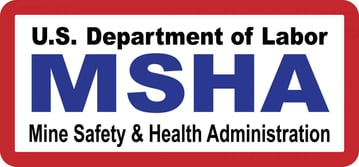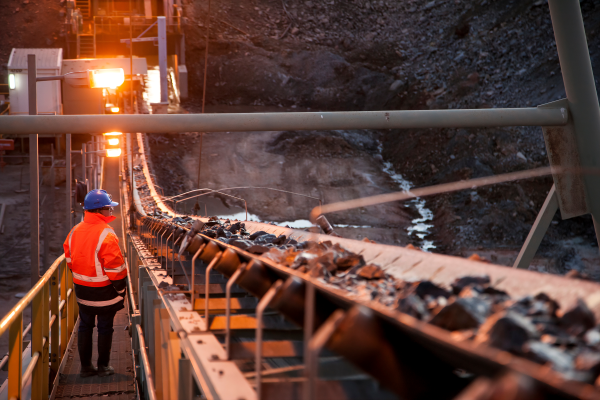
In the mining industry, safety isn’t just a priority; it’s a regulatory necessity. The Mine Safety and Health Administration (MSHA) enforces stringent safety standards across all mining operations, and failing to comply can lead to severe penalties, fines, and even operational shutdowns.
One of the most frequently overlooked areas contributing to MSHA citations is the improper use of wire and cable. In this blog, we'll explore the most common MSHA citations by mine type, how to avoid them, and why using MSHA-rated wire and cable is crucial for maintaining compliance and ensuring safety.
Common MSHA Citations by Mine Type

Coal Mines
- 30 CFR Part 75 (Underground Coal Mines): This regulation focuses on safety protocols, including electrical equipment standards. Common citations in coal mines often involve inadequate insulation, improper splicing, and faulty installation of electrical cables.
- 30 CFR Part 77 (Surface Coal Mines): Citations here typically involve non-compliance with electrical grounding and bonding standards, leading to hazards in open-pit mining operations.
.jpeg?width=600&height=402&name=Iron%20Ore%20Mine%20(Metals).jpeg)
Metal and Nonmetal Mines
- 30 CFR Part 56 (Surface Mines): This standard addresses electrical safety in surface metal and nonmetal mines. Common violations include improper grounding systems and using cables that do not meet durability standards for harsh environments.
- 30 CFR Part 57 (Underground Mines): Similar to surface mining, underground mines frequently receive citations for the use of non-compliant or deteriorated electrical wiring that doesn’t meet MSHA standards for fire resistance and insulation.
How to Avoid MSHA Citations
- Use MSHA-Rated Wire and Cable The most direct way to avoid citations is by using MSHA-approved cables designed specifically for the mining environment. These cables meet all the safety standards set by the MSHA, ensuring they can withstand extreme conditions while maintaining electrical integrity.
- Routine Inspections and Maintenance Frequent wear and tear on mining equipment can quickly turn into a citation if not addressed. Ensure your electrical systems, particularly wiring and cable, are regularly inspected for damage. Replace any worn or frayed cables immediately.
- Proper Installation Improper installation of cables and electrical systems is a frequent violation. Always follow manufacturer guidelines and ensure installations are completed by trained professionals familiar with MSHA requirements.
- Employee Training Your team plays a crucial role in maintaining compliance. Regular training on MSHA standards, including the proper handling, maintenance, and installation of wire and cable, can reduce the likelihood of mistakes that lead to citations.
The Importance of MSHA-Rated Wire and Cable
Enhanced safety is crucial in mining operations, which are well-known for their extreme conditions, including high temperatures, moisture, and mechanical stress. MSHA-rated cables are specifically designed for these environments, significantly reducing the risk of electrical fires, explosions, or equipment failures that could jeopardize worker safety.Key Features of MSHA-Rated Wire and Cable
To avoid MSHA citations and ensure safety, your wire and cable should have the following essential features:
- Flame Resistance: Mining operations present a high fire risk, especially in confined spaces. MSHA-rated cables are built with flame-retardant properties to reduce the chances of fire, a common cause of mining accidents.
- Abrasion Resistance: In both underground and surface mines, cables are exposed to rough conditions, including sharp rocks and heavy machinery. Abrasion-resistant cables can withstand these challenges without deteriorating, helping to avoid citations for damaged cables.
- Flexibility: Mining environments often require complex cable routing. Flexible MSHA-rated cables are easier to install in tight spaces and can withstand constant movement and bending without losing integrity.
- Moisture Resistance: Mines are prone to wet conditions, and water exposure can lead to electrical shorts or degradation. MSHA-approved cables are designed to resist moisture, ensuring operational reliability even in damp environments.
- Durability: Longevity matters. MSHA-rated cables are engineered for extended service life, reducing the need for frequent replacements and minimizing downtime due to electrical failures.
How Amphenol TPC Wire and Cable Can Help
At Amphenol TPC Wire and Cable, we offer a comprehensive range of MSHA-rated cables that are built to meet the demanding needs of the mining industry. Our cables are tested and certified for durability, safety, and compliance, ensuring that your operation remains efficient, compliant, and safe.
Investing in high-quality wire and cable designed for mining operations can significantly reduce your risk of receiving MSHA citations, improve safety, and keep your operation running smoothly. Contact us today to learn more about our MSHA-rated products and how we can support your compliance and safety goals.

